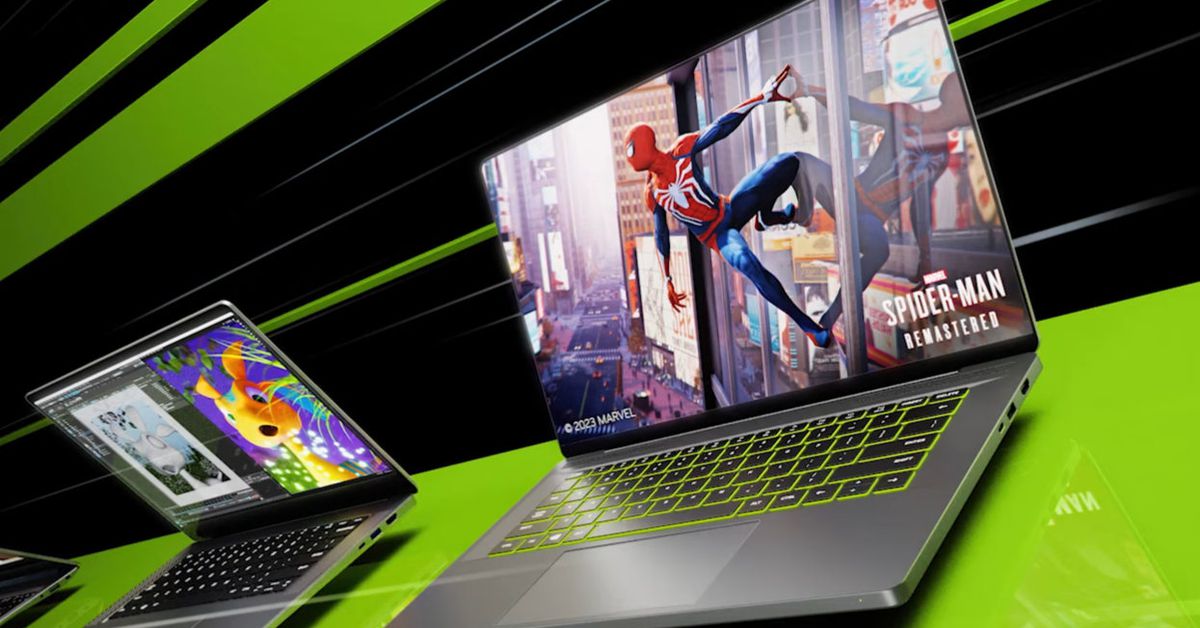Alienware has revealed the cost and availability information for its laptops featuring NVIDIA GeForce RTX 40-series graphics cards, which were introduced at the CES event last month with a new 18-inch model and other 16-inch laptops.
The Alienware m18, the biggest system offered by Alienware, will initially be on sale in the US starting February 9th, featuring a GeForce RTX 4080. The high-performance laptops with NVIDIA GeForce RTX 40-series graphics cards will have a starting cost of $2,899, with additional options, including a more affordable model starting at $2,099, to be offered later. The Canadian equivalent of the low-priced model will start at $2,999.
Alienware will release a slimmed-down laptop called the m16, featuring an RTX 4080 GPU on February 14th. It will be available starting at $3,099. Additional versions of the laptop with lower specifications will be introduced later, starting at $2,199. During the second quarter of 2023, Alienware will also offer AMD Ryzen variants of the x18, x16, and m16 laptops, however, no pricing details have been revealed for these models as of yet.
The Alienware x16, which is scheduled to be released on February 9th, could be a good option for those looking for a gaming laptop that is not too demanding. This laptop will feature an RTX 4080 GPU and specifications that are similar to the 18-inch model. The RTX 4080 version will be available for a starting price of $2,599, and more cost-effective models starting at $1,899 will be introduced later.
The Alienware m18 laptop boasts cutting-edge technology from both NVIDIA and Intel, such as an NVIDIA high-performance GPU and one of Intel’s top-performing mobile CPUs from the 13th-gen HX series. It offers ample storage space, with options for up to 9TB, and a display that can run at either 165Hz quad-HD or 480Hz 1080p. The laptop boasts state-of-the-art technology from NVIDIA and Intel, including a top-notch GPU from NVIDIA and one of the quickest mobile CPUs from Intel’s 13th-gen HX series. Despite being similar in thickness to the previous m17 model, it features enhanced cooling features, including a vapor chamber that covers the CPU and GPU, seven heat pipes, and four fans that enhance airflow by 25 percent.
Alienware will soon be releasing its first monitor with a 500Hz refresh rate, featuring a 24.5 inch screen. The launch of this monitor will start in China on February 9th and later be made available in North America. The cost for the monitor has not yet been announced for the US and Canada.
Information regarding the cost and accessibility of the forthcoming Alienware x14, as well as the Dell G15 and G16, will be disclosed on March 2nd. On that same day, Alienware will be holding a virtual event on Twitch where it will unveil additional peripherals and hardware.
As of now, it is not possible to pre-order the new Alienware laptops. People who are interested in buying the x18 or x16 models will have to wait until February 9th to make a purchase, and those looking for the slim m16 model will have to wait until February 14th for its release.
NVIDIA has unveiled the release of their latest RTX 40-Series GPUs for next-gen gaming laptops in 2023. This new range of graphics cards is expected to bring exciting changes to the gaming laptop industry, with a larger amount of VRAM and broader power limit options. This article will delve deeper into the specifications and features of the RTX 40-Series, comparing them to the still highly regarded and widely used RTX 30-Series.
The RTX 40-Series has wider power limit ranges compared to previous generations, which can help reduce heat during gaming sessions. The RTX 4070 can go as low as 35W, thanks to NVIDIA’s Ada Lovelace architecture that enables improved power efficiency. This architecture can deliver comparable performance to the previous generation RTX 30 series while consuming only 30% of the power.
There are skeptics who are skeptical of NVIDIA’s claims about the RTX 40-Series being more efficient than the previous RTX 30-Series, especially when comparing benchmarks between the two. They point out that the RTX 30-Series does not have DLSS 3, which makes it difficult to compare them. However, there have been recent reports from GeekBench and NotebookCheck.net that suggest the discrepancy in performance could be due to poor drivers and low power. Despite these initial concerns, it is believed that NVIDIA is actively working on fixing these issues and that time will ultimately prove their claims about the improved efficiency of the RTX 40-Series.


